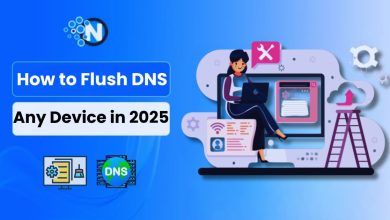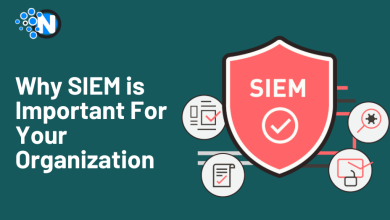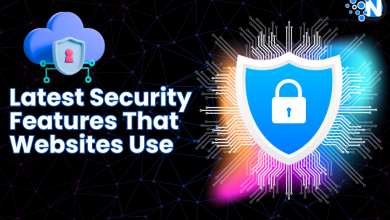12 Game-Changing Tech Tools Keeping Users Safe Online in 2025

The digital world has never been more integrated into our daily lives. We shop, socialize, work, and play online. These activities require us to share sensitive personal data. Behind the scenes, online platforms are engaged in a constant battle against increasingly advanced cyber threats.
With cyber attacks surging 600 million cyberattacks per day) worldwide in the past year, companies are sprinting to implement robust security measures that go far beyond simple password protection. From banking apps to social media platforms, the competition to provide the most secure user experience has never been more intense.
So, how to stay safe online?
In this blog post, I am going to share the 12 game-changing tech tools keeping users safe online in 2025 and beyond.
Let’s start!
What Makes Online Platforms Secure?
The most effective security strategies employ multiple protective layers, a concept known as “defense in depth.” This approach allows a system to remain secure even if one security measure is bypassed.
In gaming and gambling, for instance, platforms must be especially vigilant as they handle both personal and financial data. Gamblers frequenting online casinos can check out Card Player’s casino security information for detailed reviews of platforms that excel in implementing these protective technologies. Many of the security tools we explore below have become standard practice in the financial services sector before spreading to other online industries.
Top 12 Tech Tools for Online Platform Security
Security experts emphasize that no single technology can provide complete protection. Rather, it’s the combination of different security tools that creates a truly secure environment for users.

Let’s look at the online security technologies making the biggest impact in 2025.
1. Advanced Encryption Standards (AES-256)
Advanced Encryption Standard—256 bits (AES-256) is the highest level of secure data protection in use today. These platforms employ rigorous encryption technique to protect users’ sensitive information. This further ensures that even advanced cyber threats pose little to no risk, as the latest versions increase both protection and speed in all devices.
2. Multi-Factor Authentication (MFA)
Today’s MFA solutions rely on biometric authentication for users to verify their identities. The most advanced systems now rely on authorization through push notifications and location-based methods. With this method, account takeovers caused by stolen passwords are minimized to a large extent based on industry statistics.
3. AI-Powered Fraud Detection Systems
These advanced systems identify unusual patterns in real-time that would be impossible for human analysts to spot. They analyze everything from typing patterns to transaction timing and location data, adapting continuously to new fraud techniques while minimizing false positives. The best systems can identify potentially fraudulent activities within milliseconds, stopping attacks before they succeed.
4. Secure Payment Gateways
Modern payment gateways use tokenization, substituting customers’ payment card information with a set of random, unpredictable figures. As a result, the risk of unauthorized access to this data and subsequent cyberattacks is much lower. Advanced security features such as fraud detection monitoring help protect your business and ensure customers feel secure when paying online.
5. Zero Knowledge Architecture
With zero knowledge architecture, user data is encrypted on the device before it reaches the server. This means even the platform itself cannot access the unencrypted information. Authentication happens through cryptographic proofs rather than by comparing stored credentials, drastically reducing potential damage from data breaches. This architecture is becoming increasingly popular as users demand more control over their personal information.
6. Blockchain Verification Systems
Since blockchain can’t be altered, it ensures every important transaction is properly logged. Thanks to this technology, online platforms are offering decentralized ways to verify a user’s identity that allow the user to manage their own information. Since blockchain is transparent and distributed, it is useful for areas that depend greatly on trust.
7. End-to-End Encryption
This process means that only the intended receivers can read what is sent or shared – not the platform. Today’s E2EE systems automatically create and handle encryption keys and will still secure previous communications if attackers compromise the keys later. Messaging apps now use this technology regularly and it is starting to be used for email and sharing files as well.
8. Automated Vulnerability Scanning
Cyber criminals are always trying to find security holes in online platforms. Modern scanners run many advanced tests, check API endpoints, scan dependencies for known problems and automatically notify security teams if anything is found. Joining security efforts with development makes it fast to close security gaps before they reach the live environment.
9. Web Application Firewalls (WAF)
WAFs inspect every incoming request as it happens, blocking access to malicious traffic before it goes to the application server. They shield websites from SQL injection, prevent cross-site scripting and block other common security problems, also preventing DDoS attacks using rate limiting. Modern WAFs can deal with new security problems thanks to their machine learning features, without having to be updated manually all the time.
10. Data Loss Prevention (DLP) Tools
DLP tools scan all data in motion to and from a network and review its context to look for details related to confidential data. When it detects signs of slip-ups in following policies, these solutions can prevent any transmissions, cover the data being shared, or make the security team aware. That kind of protection matters most when dealing with controlled details such as those present in healthcare or finance.
11. Bug Bounty Programs
These programs incentivize ethical hackers to find and report vulnerabilities before malicious actors can exploit them. The crowdsourced nature gives platforms access to diverse security expertise that internal teams might not possess, identifying subtle vulnerabilities that automated tools might miss. Leading platforms now maintain continuous bug bounty programs rather than limited engagements, creating ongoing security improvement cycles.
12. Secure Development Lifecycle (SDL) Frameworks
SDL ensures that security becomes a priority in every aspect of the software lifecycle. These practices involve threat modeling during the design phase, code analysis during development and performing exhaustive security testing before releasing, identifying and resolving security risks early on. As a result, the end product is inherently more secure from its very foundations.
Final Thoughts
As cyber threats are getting advanced, platforms must employ multiple security layers to protect users effectively. The best ones combine advanced security measures with transparency about their practices, giving users confidence that their data is in safe hands. By understanding these essential security technologies, you can make more informed choices about which online services to trust with your information.




